Introduction
Mount Tai is one of China’s most revered and culturally significant mountains. Located in Shandong Province, it is part of the Five Great Mountains of China and holds the title of "Chief of the Five Sacred Mountains" due to its historical importance. For centuries, Mount Tai has been a site of pilgrimage, where emperors performed sacrificial rituals and scholars found inspiration. Today, it is a UNESCO World Heritage site, attracting millions of visitors every year with its breathtaking natural beauty, ancient temples, and rich cultural heritage. This article provides a detailed guide to the must-see attractions and unique experiences that make a trip to Mount Tai unforgettable.
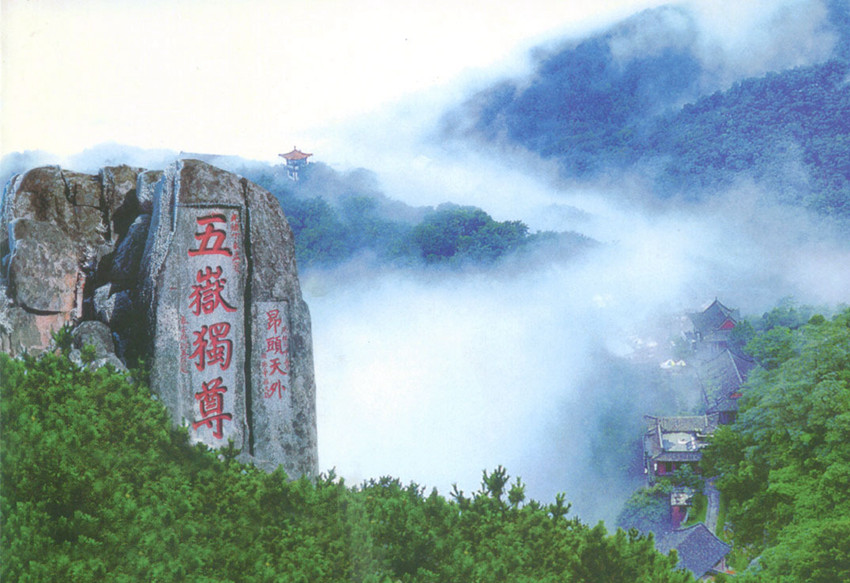
1. The Entrance: Hongmen Gate
The Hongmen Gate is one of the primary entrances to Mount Tai and marks the beginning of one of the most popular hiking routes. The gate itself is a historic structure dating back to ancient times, and from here, visitors can embark on a journey that takes them through several cultural and natural landmarks. Along the route, you'll encounter ancient pavilions, memorial arches, and stone inscriptions that are emblematic of the mountain's rich history.
1.1 Red Gate Palace
Close to the Hongmen Gate lies the Red Gate Palace, a Taoist temple that serves as a reminder of Mount Tai’s religious significance. Visitors often stop here to admire the architecture and learn about Taoist rituals before continuing their ascent.
2. The Famous Climb: Eighteen Bends
Eighteen Bends, or Shiba Pan , is one of the most iconic and challenging sections of the climb up Mount Tai. This steep stone staircase is composed of 1,600 steps that twist and turn as they ascend toward the South Heavenly Gate. Despite the physical demands, reaching the top offers a tremendous sense of accomplishment, and along the way, visitors are treated to spectacular views of the surrounding landscape.
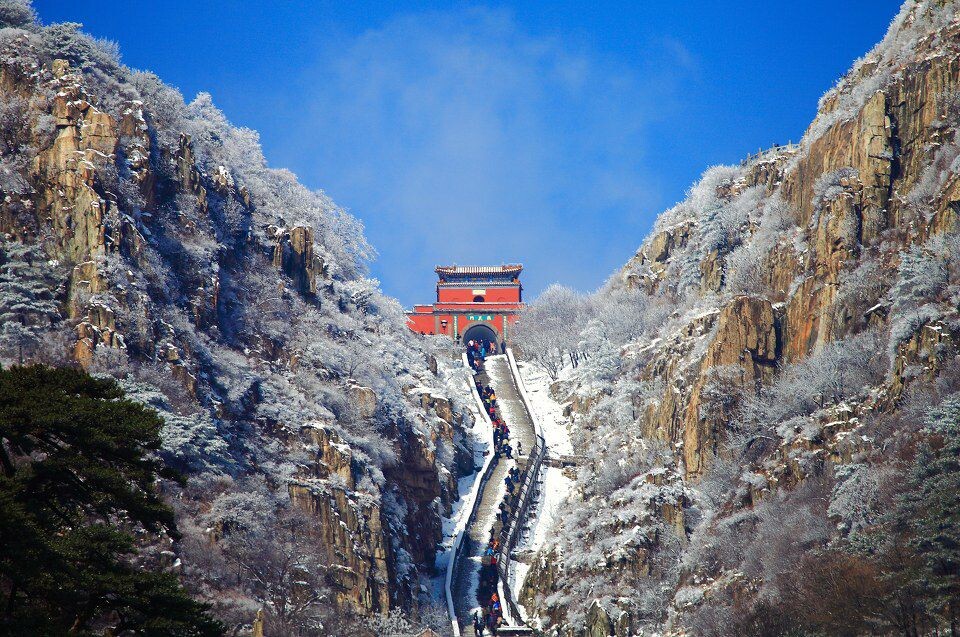
2.1 Zhongtianmen (Mid-Heaven Gate)
Before reaching the grueling Eighteen Bends, visitors will pass through Zhongtianmen , or the Mid-Heaven Gate. This area serves as a resting point where tourists can relax, enjoy refreshments, and take in the mountain scenery. For those who prefer a less strenuous journey, a cable car from here offers a more leisurely ascent to the top of the mountain.
3. The Summit: Jade Emperor Peak
Jade Emperor Peak , standing at 1,545 meters above sea level, is the highest point of Mount Tai and the culmination of any hike or pilgrimage. From the summit, visitors can enjoy panoramic views of the surrounding countryside and experience the spiritual atmosphere of this sacred place. On a clear day, the sight of the sun rising over the clouds from the peak is an awe-inspiring spectacle.
3.1 Temple of the Jade Emperor
At the top of Jade Emperor Peak is the Temple of the Jade Emperor , a Taoist temple dedicated to the supreme deity of Taoism. Pilgrims and visitors come here to offer prayers, and the temple’s location at the highest point of Mount Tai emphasizes its symbolic significance in connecting heaven and earth.
4. South Heavenly Gate
The South Heavenly Gate is another key attraction on the way to the summit. Positioned just below the Jade Emperor Peak, this impressive gate marks the entrance to the celestial realm in traditional Chinese mythology. Standing at the gate, visitors often feel as though they are stepping into a divine world, with the surrounding peaks and sea of clouds adding to the mystical ambiance.
5. Bixia Temple: Shrine to the Goddess of Mount Tai
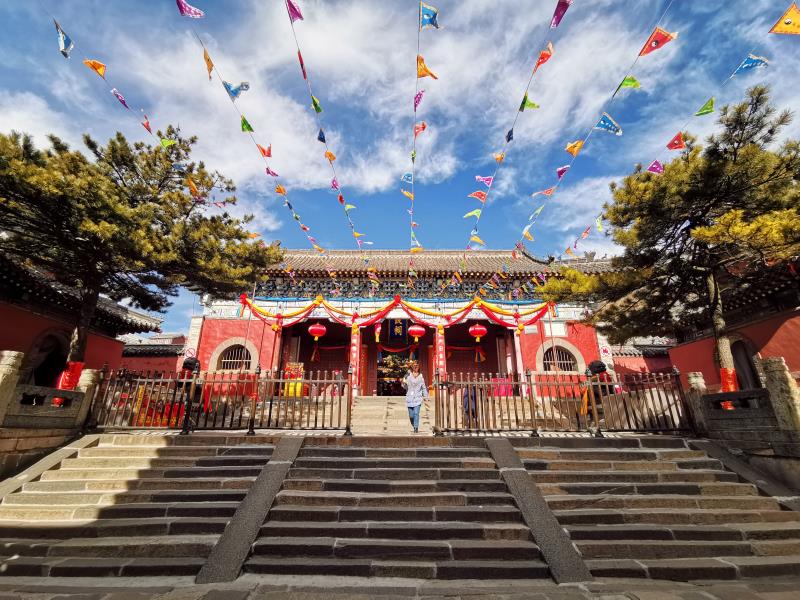
Bixia Temple is one of the most important Taoist temples on Mount Tai. Built in the Song Dynasty, the temple is dedicated to the Bixia Yuanjun, also known as the Goddess of Mount Tai. As a protector of the people, Bixia Yuanjun is believed to bring peace, health, and prosperity, making the temple a popular site for prayers and offerings. The architecture of the temple, along with its serene surroundings, makes it a highlight of any visit to Mount Tai.
6. Sunrise at Mount Tai: An Unforgettable Experience
One of the most iconic experiences on Mount Tai is watching the sunrise from the summit. Known as "Tai Shan Sunrise" , this natural phenomenon draws countless visitors who make the early morning hike to the top. As the sun rises over the horizon and illuminates the landscape, it casts a golden glow over the mountain and creates a breathtaking view of the sea of clouds below.
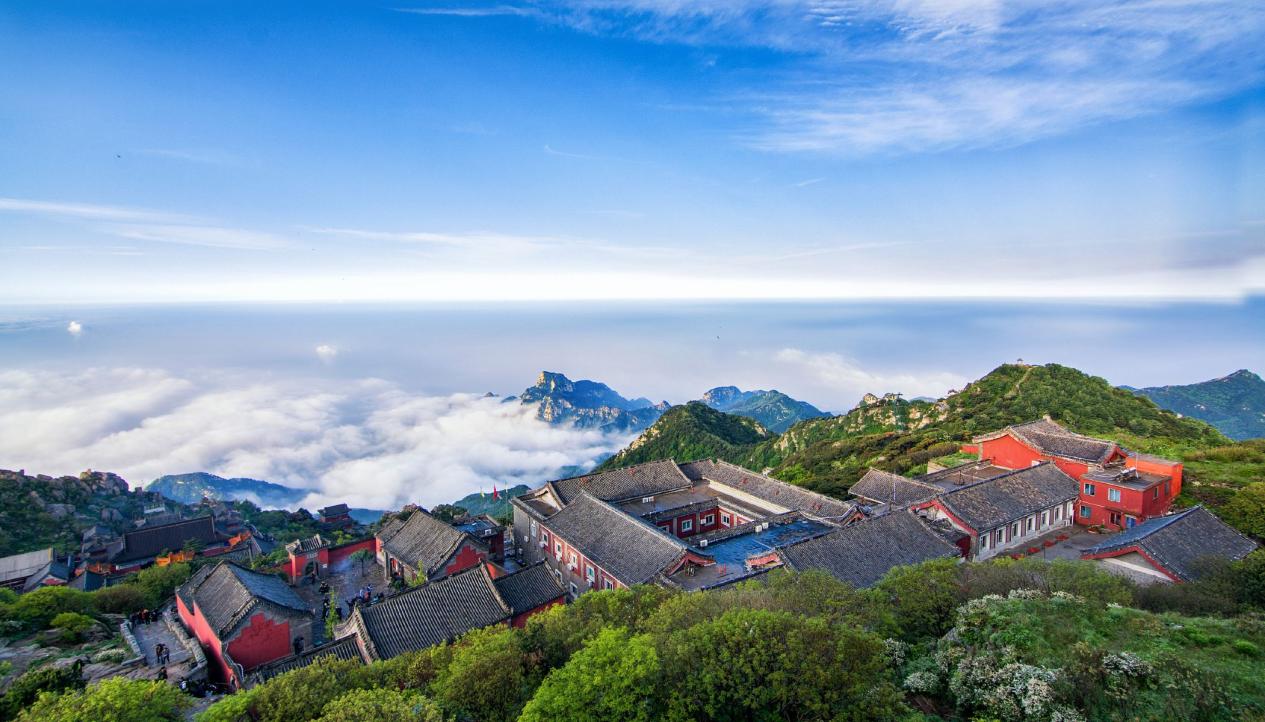
6.1 Sun Viewing Peak
Sun Viewing Peak is the best location to witness this majestic sunrise. Located slightly to the east of Jade Emperor Peak, it provides an unobstructed view of the rising sun. The tranquility and beauty of this moment leave a lasting impression on visitors, making it a must-do when visiting Mount Tai.
7. Ancient Stone Inscriptions: A Cultural Treasure
Throughout Mount Tai, visitors will find over 2,000 stone inscriptions carved by poets, scholars, and emperors over the centuries. These inscriptions, some dating back to the Han Dynasty, include poems, dedications, and philosophical musings. One of the most famous inscriptions is the "Taishan Rock Inscription" by Tang Dynasty calligrapher Yan Zhenqing. These carvings provide insight into the cultural and historical significance of the mountain and offer a fascinating glimpse into ancient Chinese civilization.
8. The Sacred Road: Royal Pilgrimage Path
The Sacred Road is an ancient ceremonial path that emperors once took during their pilgrimage to Mount Tai. It is lined with memorial arches and statues, reflecting the importance of the mountain as a site for imperial worship. Walking along this road allows visitors to follow in the footsteps of China’s rulers, connecting with a tradition that dates back more than two millennia.
9. The Pines of Mount Tai: Symbols of Strength and Longevity
The majestic pine trees of Mount Tai are another distinctive feature of the landscape. These ancient trees, many of which have stood for centuries, are often depicted in Chinese art and literature as symbols of resilience, strength, and longevity. The "Five Sacred Pines" are especially famous, and their presence adds to the mystical atmosphere of the mountain.
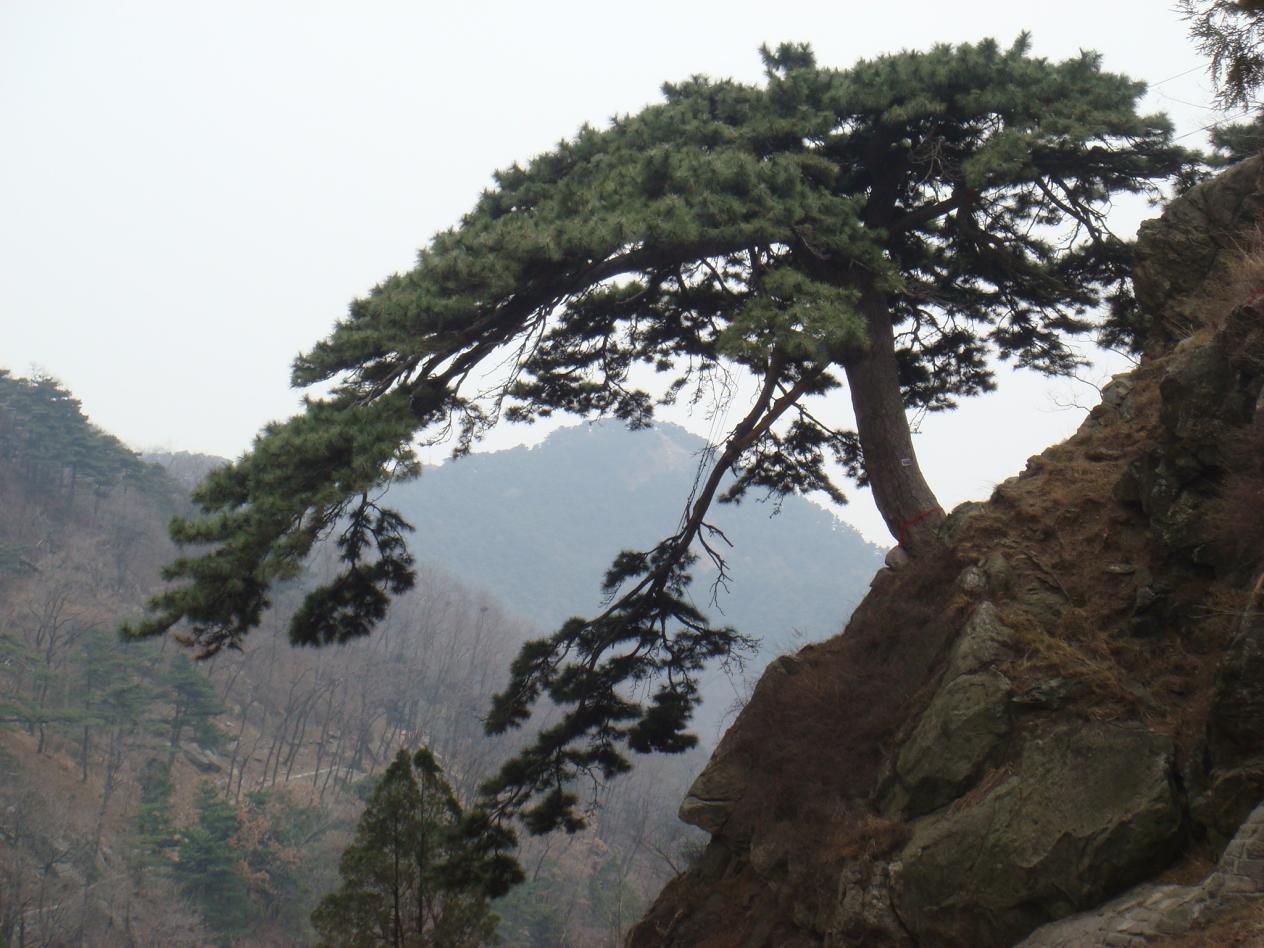
10. Other Notable Attractions
- The Azure Cloud Temple : Known for its beautiful architecture and peaceful surroundings, this temple offers a tranquil retreat for visitors.
- The Dai Temple : Located at the foot of Mount Tai, Dai Temple is one of the most significant temples in the region, known for its grand scale and rich history.
- Wanfeng Archway : This archway, located at the entrance of the mountain, is a symbol of the grandeur of Mount Tai, welcoming visitors to embark on their spiritual journey.
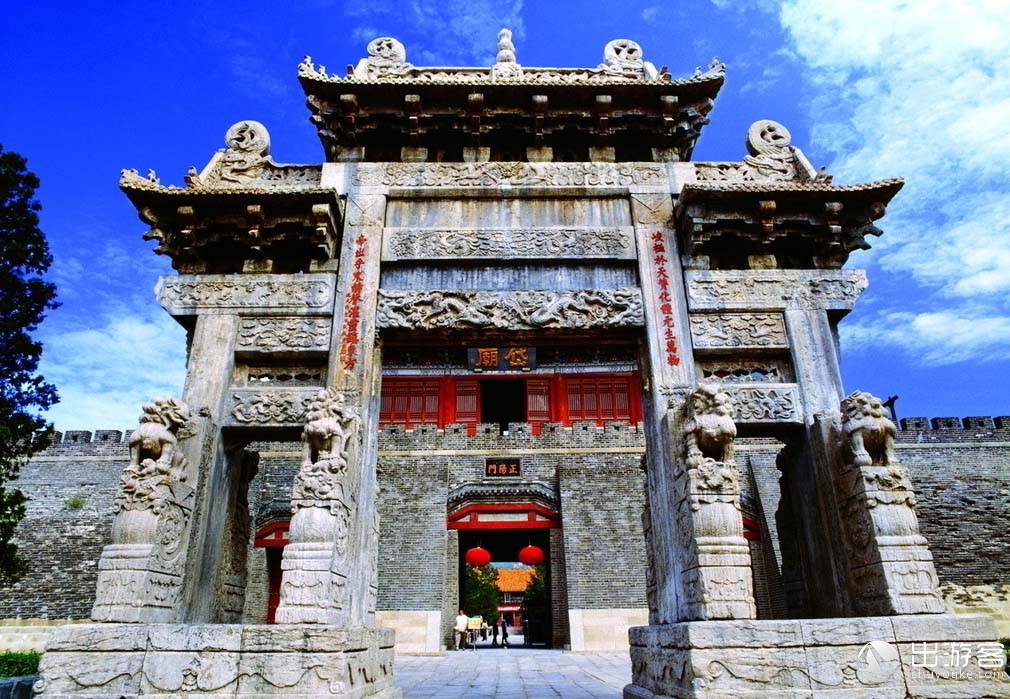
Conclusion
Mount Tai is a destination that offers a unique blend of natural beauty, cultural depth, and spiritual significance. Whether you're drawn to its historical temples, breathtaking views, or challenging hikes, a visit to Mount Tai is an unforgettable experience that captures the essence of China's ancient heritage. From the moment you step through Hongmen Gate to the final ascent to Jade Emperor Peak, Mount Tai invites you to explore its rich history and immerse yourself in its awe-inspiring landscapes.



